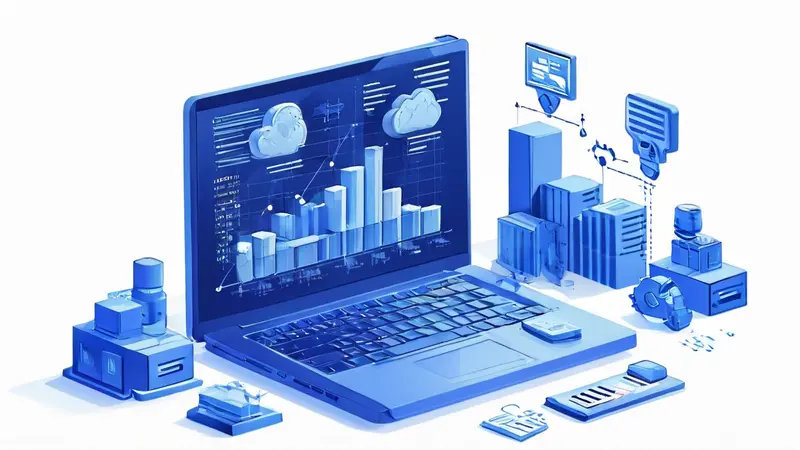The editor of Downcodes brings you a detailed tutorial on how to create a flip book effect in PPT. This article will explain in detail how to use the animation effects and advanced functions of PPT, such as triggers and hidden slides, to simulate a realistic book-turning effect and enhance the appeal of your presentation. From page layout design to animation settings, testing and correction, each step will be clearly explained, helping you easily master this technique and make your PPT presentations more lively and interesting.

PPT can create a book-turning effect by using animation and page design to simulate the visual experience of turning pages in a real book. Key steps include setting appropriate page-turning animations, designing page layouts, and adjusting animation order and speed. By applying the "Flip" animation effect under the "Switch" tab and making detailed adjustments to it, you can achieve a more realistic flipping book effect. If you want to be more professional, you can also use triggers to set the animation playback sequence, and use the hidden slide technique to create a multi-level page turning effect.
Before you start setting up the flipping effect, you must first design the content layout of each page. You should make sure that the content on each page is neatly formatted and beautiful, and that there are reasonable connections between pages. Whether you need to imitate the double-sided design of a traditional book or display each page individually needs to be considered.
Preparation work: Set the number of PPT pages according to the overall content volume, and place corresponding text, pictures or other multimedia elements on each page. Page design: Use a unified background, font style and layout to keep the style of the entire PPT consistent. You can add an image of the spine to the side of the page to enhance the authenticity of the book-turning effect.The next step is to set up animation, which is a key step to achieve the effect of turning a book. The selection and settings of animation effects need to be carefully tuned to simulate realistic page turning.
Select animation: In the "Animation" tab, select the "Flip" or "Cube" animation effect in "Switch". These two effects are more similar to the effect of turning a real book. Detailed adjustment: Adjust the speed, sound and animation time of the selected page turning animation. In the "Animation Pane", you can set the playback order of animations to ensure a smooth page turning experience.To make the flip book effect more professional, you can use PPT’s advanced animation features, such as triggers or hidden slides.
Trigger settings: By setting triggers, users can control the playback of animations, such as clicking a button to turn pages, which can make the book turning effect more interactive. Hidden slide: You can use the hidden slide function to create a multi-level page turning effect, such as temporarily staying on a certain page and then turning to a special hidden page.After production is completed, multiple tests are required to ensure the smoothness and authenticity of the book turning effect.
Check for continuity: Verify that the transitions between pages are smooth and nothing abrupt or unnatural. Adjust details: You may need to go back to the animation settings and make some fine-tuning, including the speed, order and triggering of the animation.Creating a flip book effect using PPT requires patience and careful adjustment of every detail, from page design to animation settings, to testing and correcting all possible problems. While it may take some time and practice, it will ultimately transform your presentation into a compelling visual story. With this flip-book effect, you can give your audience a richer, more engaging presentation experience.
How to create a flip book effect in PPT?
What is the PPT book flipping effect? PPT book flipping effect refers to simulating the effect of real book page turning in slides, making the slides more vivid and interesting.
How to achieve the book-turning effect? There are two ways to achieve the book flipping effect:
Use PPT's built-in transition animation: select the "Slide Switch" tab, and then select "Erase", "Box Flip" or "Curtain Flip" effects from the "Transition Effect" to achieve a book-turning effect. Use plug-ins or tools: There are some third-party plug-ins or tools that can provide more complex and professional flipping effects. You can search and download these plug-ins or tools on the Internet, and then use them according to the instructions.How to optimize the presentation of the book flipping effect? To optimize the presentation of the book flipping effect, you can consider the following points:
Choose the appropriate transition animation: Choose the most appropriate transition animation effect based on the slide content and theme. Control the page turning speed: adjust the page turning speed according to the audience's understanding and acceptance ability to avoid too fast or too slow page turning effect. Add sound effects and background music: Add appropriate sound effects or background music during page turning to make the slides more vivid and attractive. Pay attention to format and typesetting: On the content of each page, pay attention to the consistency and beauty of format and typesetting to ensure that the entire page turning effect is smooth and coherent.With these methods, you can easily create a beautiful flip-book effect for your slides and bring a better visual experience to your audience.
I hope this tutorial by the editor of Downcodes can help you create a stunning PPT flip book effect! Hurry up and give it a try!